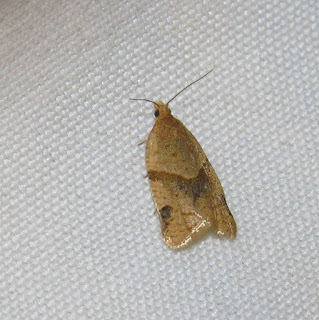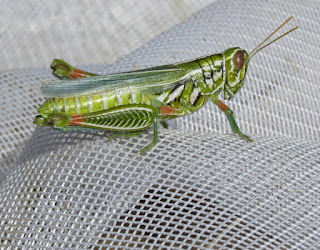Time for updates on upcoming events, point out a new feature to this blog, and solicit additional sponsors. It may not feel like spring everywhere, but don't let it sneak up on you and catch you unprepared. Here are some things to look forward to, in Colorado and elsewhere.
- April 14 (Saturday), 9:45 AM - 3 PM (maximum): Second Annual Tiger Beetle Hunt at Lake Pueblo State Park, Colorado, USA, by the Mile High Bug Club. We can expect to see at least five species of colorful Cicindela tiger beetles.
- April 18 (Wednesday), 6:30-8:30 PM: "The Magic of Moths,", presented by yours truly at Bear Creek Nature Center for the Aiken Audubon Society, Colorado Springs, Colorado, USA.
- April 21 (Saturday), 9 AM - 3 PM: Mile High Bug Club at Garden of the Gods Park for Earth Day, Colorado Springs, Colorado, USA.
- April 22-24 (Sunday through Tuesday), various times: daytime insect walks and evening presentation by "Bug Eric" for the Austin Butterfly Forum, Austin, Texas, USA.
- May 12 (Saturday), 9 AM - Noon: "Tarantulas of Colorado" with the Mile High Bug Club for the Pikes Peak Birding & Nature Festival at Bear Creek Nature Center, Colorado Springs, Colorado, USA. Register now for field trips and other activities!
- May 14 (Monday), 6:30 PM - 8:30 PM: Mile High Bug Club membership meeting at the Gold Hill Division Police Station, Colorado Springs, Colorado, USA. Come learn more about our education and conservation organization and what we have planned.
- May 19 (Saturday), 11 AM - 3 PM: "Tarantulas of Colorado" with the Mile High Bug Club at the Rocky Mountain Dinosaur Resource Center, Woodland Park, Colorado, USA. We will have live examples of the three tarantula species found in Colorado, plus much more.
That's all for events as of now, but watch this blog for additions as the weather warms.
You may have noticed the new tab at the top of this page. Click on it and you will be taken to a comprehensive and highly organized text and graphic document on how to make an insect collection. This may prove useful to teachers, students, naturalists, and citizen scientists wishing to collect insects in a fashion that will enhance their historical and scientific value as preserved specimens. I recognize collecting is not for everyone. I know some people who only collect specimens they find already dead. Whatever your personal inclination, please understand that without specimen collections, our collective scientific understanding of the world would be non-existent. Thank you.
As always, I welcome sponsors and advertisers to support this blog. BioQuip and Tender Corporation are currently my only sponsors. I did apply recently for a grant, but am not assuming anything about the outcome. Long-term loyalty is what I am most looking for. Please contact me if your institution or business is compatible with the educational goals of this blog, and you would like advertising space.
I would like to publicly thank the many individuals who have contributed financially or in-kind to the endurance of this online publication. Your support is immeasurable and invaluable. I am considering adding another tab (page) to recognize donors by name. Please let me know if you think this is a good idea, an invasion of privacy, or whatever. I will not exercise this option without consent and consensus. Please comment below if you would be so kind. Thank you, and happy spring!





























